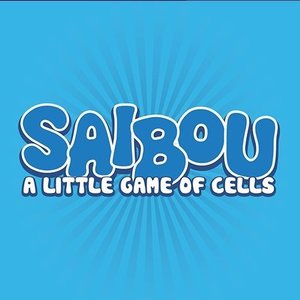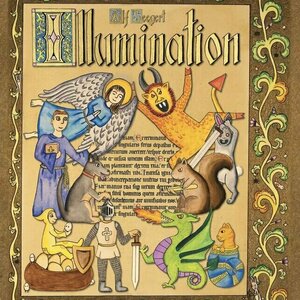Purple Phoenix Games (2266 KP) rated Kingdomino in Tabletop Games
Jun 12, 2019
DISCLAIMER: This review is focused on vanilla Kingdomino. We have the Age of Giants expansion and will be reviewing that as well. Maybe. If or when we do we will add that content to this review or link to it here. -T
Yep. That’s the entire game. On your turn you take the tile your meeple is currently sitting on and place it on another tile from the current offer column. That new tile will be your tile to be placed during the next round. Now you take the tile you just moved from and place it anywhere on your kingdom “grid” matching up similar land types if you can. Each crown icon shown in a land type will score 1 VP per land tile that is connected and matching. Example: you have a sand tile with two crowns on it. You have connected several tiles together and you have a connected sand area of seven squares showing sand. Two crowns times seven squares equals 14 VPs for that sand area. Just do that for all areas with crowns to get your final score.
Where is the conflict, you ask? Every good story has a conflict! Well, you cannot take just ANY tile you want. The tiles are placed in the offer column in numeric order (on the backs of the tiles are numbers). Then they are flipped so you can see what is coming up on the next round. Whomever chooses the lowest number tile goes first, and subsequently chooses their tile for the next round. Herein lies the conflict and what little player interaction there is in the game: you can block your opponent(s) by taking the tiles you see they may want. I personally do not play any games this way, but it’s a valid strategy. I am in it to win it, not in it to make you lose it.
Ok, so at first glance this is a children’s game. It can also be a hard sell to get people to want to play it. “It’s like Dominoes, but better.” That usually doesn’t spark a whole lot of energy and interest when I open with that. I am open to better sales pitches because this is a truly great game. Yes, it’s ultimately Dominoes at its heart. Yes, it’s very light. But dang it, this game is really fun!
The little cardboard castles that you build around are cute, but also kinda unnecessary. The meeples are, well, meeples. Not really too exciting to look at, but they are merely there to show player color. The domino tiles are a good thickness and the art is fun and whimsical. I LIKE looking at the tiles and sometimes finding a little hidden easter egg in there. I have no complaints about the components. Good on you, Blue Orange Games.
The game play is so simple but also so engaging! My mother, who usually only plays Rummikub, actually agreed to play this with me and she really really enjoyed it! Kids can play it and do really well. Older adults can too! It’s a great game to consider for gateway gaming, for a filler palate cleanser, or even for lighthearted tournament play. It just works well in so many scenarios. Is it my favorite game of all time? No. Is it in my Top 10? No. But I can guarantee you that I will never get rid of this little gem.
That said, Purple Phoenix Games gives this title a royal 14 / 18. Build on, Kingdomino!
https://purplephoenixgames.wordpress.com/2019/02/27/kingdomino-review/

PICKA - Dating, Meet, Chat
Dating, Lifestyle and Social Networking
App
PICKA! One of the best dating apps launched in 2017. A new, thrilling location based free dating...

The fabulous Animal Playground
Games and Entertainment
App
If your kids are animal lovers and you’re looking for something both fun and educational, with...

Kids Games Educational Babies
Games and Education
App
"Funny Food 2" it includes 15 various amusing games in ALL topics which are required for your...

The ABC Song Educational Game
Education and Games
App
~~~ 9 amazing spelling activities and games inside + interactive ABC song ~~~ ~~~ More than...

The ABC Song: Full Version
Education and Games
App
~~~ 9 amazing spelling activities and games inside + interactive ABC song ~~~ ~~~ More than...
Purple Phoenix Games (2266 KP) rated SAIBOU in Tabletop Games
Aug 29, 2019
SAIBOU is “a little game of cells” and that tagline is just short of perfect. I say just short because the word “cute” has been omitted. This game is stinkin CUUUTE!! “Saibou” is the Japanese word for “cell,” and in this game the players are racing to complete a culture of cells by building a 3×3 grid of chibi cell cards. Opponents will be attempting the same as well as infecting your culture with horrible hungry bacterias and viruses to eat up your cutie cells. Luckily you have defenses and cures you can apply to keep your little culture garden thriving.
DISCLAIMER: We were provided a review copy of this game for the purposes of this review. These are preview copy components, and I do not know if the final components will be similar or different, or if the Kickstarter campaign will alter or add anything through stretch goals. -T
Setting up SAIBOU is a snap. Shuffle the big deck of square cards and deal out five to each player. On your turn play a card. It could be a cell, migrate, bacteria, virus, cure, or macrophage card. Cell cards are what you are trying to build in your culture and is your method of victory. Each cell card (except the wild) has colored half-circles on the edges that need to match up with neighboring cards to be valid plays.
Can’t seem to draw the perfect card you need? Play a migrate card and switch out an opponent’s card with one of yours (even if it has a token on it). Get that wild from your opponent and plop it right into your culture and watch them squirm. Feeling especially aggressive? Play a bacteria or virus card, place the corresponding token on the cell you want to infect and watch the devastation! Bacteria cards are of a specific color, or colors, that will be placed on cells of matching color. Viruses, however, are not so picky – they will go after ANY cell. “So what? Who cares if I contracted a virus?” Well, your culture cares because at the end of each player’s turn a bacteria or virus will consume the cell upon which it rests and then move on to the next surrounding cell. Bacteria move to matching colors, and viruses move to whichever card they can.
So, you’ve been infected. What now? Well, all is not lost. In the deck are several cure cards that picture medicine pills that can cure your culture of all bacteria and viruses. Would you like to prevent this from happening in the future? Play the white macrophage (looks like a beefcake cloud with Ray-Bans (not a sponsor)) card and place a white disc on any cell you would like to protect. That cell can no longer be a target of attack. Play continues in this fashion until someone has built a 3×3 grid and won the game!
Components. Per my disclaimer this game is still in prototype so I can only comment on the components provided to us. Keep in mind they may (and probably will) change or improve during the Kickstarter campaign. The game is a deck of cards and some plastic tokens. The cards are great and feature simply wonderful art. I totally dig the chibi style for this game and it was an inspired choice. Just looking at those cute cells instantly makes you want to protect them and creates a connection that pains you to lose them to a virus. A+ on art from me. The tokens, in this prototype version, leave much to be desired. The colors don’t really match the cards, but I am hopeful that will be improved upon as a result of the campaign for retail release. This didn’t cause ANY issues during game play, but upon teaching the game I had to reiterate that the card is actually a YELLOW cell that matches the yellow token. Perhaps the token will end up being orange to match the card because I think switching the card to yellow may cause issues when matching the colored edges. Unfortunately, that said, the colored discs on the edges of the cards (and also the corresponding tokens) do not really work with colorblindness, as there is no distinction other than color for these components. This may (and hopefully will) be considered for the final draft of the game. Luckily I do not suffer from colorblindness so I quite enjoy it all, but I need to be an advocate for those who do.
All in all this is such a lovely game that I am so happy we were able to play. The cute art and double-thinking adds so much to the game play that we just were eating up every time. Speaking of eating up, those bacteria and viruses are such powerful little bugs that can really muck up the best laid plans and create havoc on the table. It’s delicious! Note: we did not taste the game, so claims of deliciousness are for flavor only. Note 2: I guess I cannot use language without using words to describe food, even though this is not a game about food – but I would probably eat it because it looks so dang good. All this said, Purple Phoenix Games is super impressed by such a simple game, and we highly highly recommend any gamer type to check it out.
Purple Phoenix Games (2266 KP) rated Illumination in Tabletop Games
Oct 5, 2021
Illumination is a game about two monks who are tasked with illuminating the pages of manuscripts with drawings in the hopes of becoming the next head of the Scriptorium: The Scriptmaster, one might say. However, one of the monks gets a little itch and begins to draw irreverent subjects, like demons, dragons, and such. Which monk will earn the made-up-by-me title of Scriptmaster? Guess you will have to play to find out.
DISCLAIMER: We were provided a copy of this game for the purposes of this review. This is a retail copy of the game, so what you see in these photos is exactly what would be received in your box. I do not intend to cover every single rule included in the rulebook, but will describe the overall game flow and major rule set so that our readers may get a sense of how the game plays. For more in depth rules, you may purchase a copy online or from your FLGS. -T
As with many games that are well endowed with components, setup can be a bit of a task. The game will be focused around a few main areas. First, the three manuscript pages are placed on the table in any orientation, with the purple wild Drollery tiles placed on one text box on each page. The Monastery mat is placed nearby as well, with the Abbot pawn randomly placed on a blank station. This pawn will be moved around the map during play to determine which rituals may be performed at any one time. Each player will have their own player mat, upon which will be placed their starting gold (1 for the Reverent player and 5 for the Irreverent player), as well as their starting nine Illumination tiles. The rules mention separating all the Illumination tiles into stacks of three, choosing three of these stacks to flip over and place on the play mat without altering the order. This is very important to keep the tiles in their randomized order. The remainder of the tiles are to be placed nearby in stacks of three. Each player is dealt one starting Scriptorium card and a random Crusade card that will offer bonuses at the end of the game. Once all setup, the game may begin with the Reverent player’s turn.
On a turn, the active player will choose from their mat one row or column of three tiles to be played. They take the three tiles and place them upon one of the three book pages on the table, in the margins. From there the player can choose any tile from the margin to place onto the page in any order they wish, upon any quill icon they choose (except for coin tiles – those simply grant two coins immediately). If the tile is placed on a quill of a matching color to that of the tile, the player will immediately collect one coin and place it on the player mat. If the tile is placed on a quill and orthogonally touches a tile of the matching color, the player then collects a Ritual token of the same color. These Ritual tokens are used in sets of three, four, or five in order to earn VP for end of game scoring. Each purple Drollery tile is wild for the purpose of placement and Ritual token collection. Each tile placed will collect its earnings immediately, and any coins earned may be spent immediately as well.
A player may use coins for several purposes throughout the game: move a tile from the margin of one book to the margin of a different book, move the Abbot one space along the track for Ritual purposes, or to draw a Scriptorium card. The other resources are Ritual tokens, and may be spent during the turn as well. In order to spend these, the Abbot must be on the matching location on the Monastery board, and the player may spend three, four, or five matching tokens to perform the Ritual. They discard the tokens, place one of their cubes upon the appropriate icon on the Monastery mat for VP at game end.
At any time during the turn Scriptorium cards may be played. These are very special cards that allow the player to complete certain actions that break the normal rules. This could be a free movement of the Abbot, or switching places of two tiles on the player mat, or even banishing one of the opponent’s tiles to another book entirely.
Why mention the battles in the intro if they are not part of the game? They are. Once opposing foes are placed orthogonally from each other, and all involved tiles are completely enclosed by other tiles or board obstacles, a Bounded Battle will begin. Battles are simple to resolve as it requires players to count the number of combatants on both sides and whichever side has more forces wins the battle. The winner places their cube on the appropriate battle card near the Monastery mat, and the loser gains coins equal to the number of their tiles lost to battle. Tiles that are lost are simply flipped to its opposite side.
Play continues in this fashion of players choosing and placing tiles, drawing and using Scriptorium cards, performing Rituals, and resolving Bounded Battles until both players pass their turn. The game is then over and VP counted in all their places around the play area. The player with the most points becomes the next Scriptmaster Flex and is able to enhance or defile as many manuscripts as they like!
Components. This game has a lot of components, but they are mostly cardboard tiles, cardstock cards and mats, and wooden cubes. The quality is all very fine, as to be expected with Eagle-Gryphon games. The art, for me, is the biggest drawback of the game. I UNDERSTAND why it looks the way it does – in trying to stick with a Medieval manuscript theme some decision were made on the style. It just doesn’t vibe with me. I took a look at the new edition of The Road to Canterbury, by the same designer and publisher, and loved the look of it. I REALIZE that the tiles are supposed to be not only reminiscent of the art style of that time period, but also imaginations of monks and their doodles, but it’s just not for me. I do like the looks of everything else except the art on the tiles, and when that’s the majority of the components I am looking at, I sigh a little. I am absolutely no artist, and I can acknowledge that the art presented is very good and in line with the theme. Oh well.
The game play is very solid, and I do like it quite a bit. Everything makes a lot of sense as to why you are doing the actions, and the most difficult thing to comprehend the first time through is the Bounded Battles. You see, battles don’t immediately happen when you pit one foe against another. In fact, all tiles engaged need to be surrounded by other tiles or battleground obstacles before battle can begin. This allows both sides to add more tiles to help sway the balance of power, and can get a little confusing for some players. Not ME, of course, but SOME players (ok it was totally me the first time through). I am thankful that resolving the battles are pretty simple, and winning battles gives the victor a cool five points.
Other aspects I really enjoy are the Scriptorium cards and the Rituals. Again, the Scriptorium cards can be drawn for two coins during the game and can provide excellent rule-breaking choices to the players. Any time a game has cards that bend the rules, I generally am a fan. The Rituals are merely tokens that are collected and then turned in for points. This doesn’t necessarily sound that interesting until I reveal that a player board only has space for seven items: Ritual tokens AND coins included. So a player may be stacking up coins, and not have space for Ritual tokens or vice versa. Hard choices need to be made sometimes, but to help with that Ritual tokens can also be used like a coin, but not the other way around. So there is no buying Ritual tokens. Having that restriction of seven items on hand is a really nice touch, and makes each turn important.
So all in all I enjoyed my plays of Illumination. I have yet to try the solo version that is included, but I will soon. I feel that of the two Medieval series games I have played I prefer The Road to Canterbury, but I do like the different feel of Illumination. Having a solo mode is also very attractive to me because my wife and I do not always have matching schedules where we can game together. I like Illumination for the actual gameplay, but the art is a turn-off for me. Purple Phoenix Games gives this one an irreverent 4 / 6. If you are looking for something a little different that features some interesting game play, tons of choices, yet is restrictive as well, take a look at Illumination. Try not to complete too many wine and candle rituals though. Those two things don’t mix very well in my experience.
Emma @ The Movies (1786 KP) rated Downsizing (2017) in Movies
Jun 30, 2019 (Updated Sep 25, 2019)
Wow... just wow. Matt Damon is doing amazingly well at reassuring me of the reasons I don't like his films. I'm afraid to say that this one gets two stars purely for the fact that the story line had so much potential... and barely any of it was tapped.
If you go on to IMDb you can see that they've listed this one as comedy, drama, and sci-fi. Now, the last one is a given, as unless I've been missing something we are unable to shrink people. But the other two... I genuinely think that there were two versions of the script, one comedy and one drama, and when someone was taking them to production they accidentally dropped them and ended up matching the comedy beginning with the drama end... the worst type of pantomime horse ever created.
The trailer that I kept seeing for this one looked entirely like a comedy. I was really surprised that it became a "drama". It could quite easily have been one or the other, Damon would have fit well in the comedy version, and had they done some fun stuff around him and his wife trying to reconcile after she bailed on being Downsized I could have seen that working. Equally, with some different casting I could have seen the more serious ending to the movie working if they'd had an equally serious beginning. As it is though this movie seems to have no idea who it's trying to appeal to... and actually, thinking about it... I'm going to revoke one of those stars, talking over it has made me see the error of my ways.
Sarah (7800 KP) rated Frozen II (2019) in Movies
Dec 11, 2019
Either way, Frozen II is an impressive sequel in that it's actually very good. The animation is superb as you'd expect from Disney and there's a lot of heart and humour in this. There are 2 notably stand out brilliant moments in this film: the first is Olaf's retelling of the events of the first film (I nearly wet myself laughing at this point) and Kristoff's power ballad - not only is it a great song but hilarious too - I won't spoil it for anyone but Sven and the reindeer, genius. The songs themselves are good and there are some stand out tunes amongst them all, but I did feel like they didn't quite match up to those from the original. I've actually come out of the film with Let It Go stuck in my head rather than any other the newer tracks.
The plot in this film is good, it's your typical Disney fare with some fun and adorable characters thrown in. My biggest problem with this though is the overall cheesy lovey dovey over affectionate-ness of it all. Yes I know that's not unusual for a Disney film, but this felt like way too much even for Disney. I was ready to reach for the sick bag by the time it finished. It's a shame really as I think if they had eased up on the over the top sisterly love, I would've rated this a little higher as I really enjoyed everything else. Or maybe I just hated this aspect because I'm a stone cold heartless Brit...
Overall a very good impressive sequel, that almost comes close to matching up to the original.




